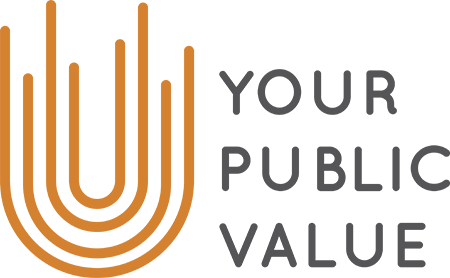Sustainability reports are often opaque to the non-experts. Information can easily hide behind acronyms and technical standards. Your Public Value continues to collect the views of international experts. After Dominic Tantram’s blog on greenwashing and why it matters, we open our platform to Marta Misiulaityte, a long time engaged citizen of Lithuania and sustainability manager. Below is her LinkedIn blog, in which she offers tips to better understand and see through corporate sustainability reports.
Corporate Sustainability Reporting: How to Know When it’s the Real Deal
Let’s face it: who’s got the time and the patience to sift through 30+ pages of a corporate list of ‘good deeds’ to find out if a company is taking sustainability seriously?
Thankfully, sustainability reporting standards come to the rescue by formalizing and structuring how companies disclose their non-financial performance.
And yet, one could easily get lost in the sea of CSR and business sustainability standards, certifications and awards that have surfaced in recent years. While this multiplicity reflects the growing importance of corporate sustainability, it can also overwhelm consumers and partners trying to grasp the full extent of a given company’s sustainability performance.
In this article I discuss the most popular sustainability reporting standards and give quick tips for assessing the companies’ sustainability reports. These tips will save you time by highlighting the key elements of each standard.
Global Reporting Initiative
The Global Reporting Initiative (GRI) is arguably the most extensive and popular global non-financial reporting standard. Its focus is to release information to stakeholders about the company’s positive and negative impact on its social, economic and natural environment. It consists of a base module (universal guidelines), which is a set of required disclosure criteria, and 34* topic-specific modules. How the GRI works is that an organization is supposed to undergo a process to determine its material areas (i.e., topics that are important when considering the organization’s specific social, economic and environmental impacts). Having determined and justified why specific topics are material, the company supplements the base module with the relevant topic-specific disclosures.
Pros: Recognised globally, comprehensive and detailed; requires companies to explain not only the result of their sustainability performance, but also their management approach.
Cons: If a company dutifully identifies a lot of material (relevant) topics, the report can easily become too long and overly technical. The comprehensive and detailed nature of the GRI standards can make it difficult for an average reader to evaluate the organization’s key impacts.
Reader tip: The trick with the GRI is that companies might limit their disclosure to the base module and claim that they have used the GRI standard. However, the base module reveals only very basic information.
Scan the report for the keyword ‘materiality’ to see if a given company has credibly explained its chosen material areas and how they were established (ideally, at least partly through stakeholder consultation).
(*including those that will come into effect in January 2021 or later)
Sustainability Accounting Standards Board
The reporting standard by the US-based Sustainability Accounting Standards Board (SASB) was created with the intention of helping investors glean the most essential information about corporate sustainability in specific industries. The SASB standard doesn’t try to cover the entirety of an organization’s impacts, but rather asks organizations to reveal information only about those metrics where their most essential impacts fall. While with the GRI, the company is supposed to determine which metrics it will disclose based on its own materiality assessment, the SASB standard dictates that a company should select one of the 77 ready-made industry-specific standards and disclose everything contained therein.
Pros: Reader-friendly; highlights key impacts; easy to compare the performance of companies in the same industry.
Cons: Limited metrics; does not take into account local stakeholder expectations; most disclosures of a management approach are not standardized; US-centric, limited global uptake.
Reader tip: The SASB standard was initially created for investors, so it focuses more on how the external environment affects a given company (its financial performance) rather than how a company affects its external environmental. Theoretically, this means that if investors think that climate change will not significantly affect a given industry’s long-term prosperity, climate change impact will not be included as a reporting requirement for the companies in that industry – regardless of whether any individual company in that sector would itself contribute significantly to accelerating climate change.
Therefore, always examine the list of revealed metrics and think about whether it paints a sufficiently complete picture of the company’s impact.
Integrated Reporting Framework
The main purpose of the Integrated Reporting Framework (IRF) is to provide guidance and integrate the reporting of financial and non-financial data. Its function is to help companies narrate how well they are positioned to create value over time. Value is defined in the broadest sense using six different types of interrelated capital – financial, manufactured, intellectual, human, natural, and social & relationship. (For example, investing money into employee training decreases financial but increases human capital.) In my opinion, the IRF has a lot of educational value, as the guidelines explain the theoretical underpinning of the broader definition of value creation. However, the IRF skimps on specific metrics to include, which makes establishing the report content more difficult for first-time sustainability or CSR reporters.
Pros: Encourages holistic systems thinking and integrated decision-making; reports on the future ability to create value; allows for storytelling.
Cons: Tailored to investors at the expense of other stakeholder interests; meant to guide reporting more than to serve as a strict standard (thus less comparable across companies); lacks metric or KPI suggestions.
Reader tip: Some of the best IRF reports I‘ve seen break down the risks and impacts by stakeholder group and explain how the company goes about addressing them.
Read the section on material matters and stakeholder management carefully to get a pretty good initial impression of a company‘s commitment to sustainability governance.
Nasdaq ESG
Nasdaq created its own environmental, social and governance (ESG) disclosure framework for listed companies. Like the SASB, its main audience is investors, although in recent years it has gained some broader popularity. Unlike the SASB, however, it is not industry-specific and therefore allows for cross-sectoral performance comparisons. A useful novelty this year is the API that allows companies to input data and easily generate reports that conform to other reporting standards such as the GRI and the SASB.
Pros: Concise and focused on clear environmental, social and governance factors; comparable across industries; user-friendly and generally good for first-time reporters; high importance placed on governance.
Cons: Lacks industry specificity; not very comprehensive; not broadly adopted.
Reader tip: When you open the report, do a quick search on the keyword “policy”. It will point you to the questions about a company’s environmental, labor and other policies.
While having specific sustainability policies does not automatically mean that sustainability targets are appropriate and ambitious, the opposite of that – no policy – often indicates the lack of a coherent sustainability approach.
Conclusion & Summary
The way a company discloses its sustainability practices can give a first indication of a company’s general attitude towards non-financial performance. However, analyzing the data reported remains tricky and time-consuming, and the field does not show enough signs of convergence (although if I had to, I would bet my money on the GRI). Below is a quick summary of the pros and cons I discussed in this article.

I am really looking forward to the future when data will be provided real-time and stakeholders, rather than companies, will be the ones choosing the desired format of corporate disclosure. Until then, the tips above can hopefully help you spend a little less time scrolling through corporate pdfs to identify the most significant information.
Marta Misiulaityte is sustainability manager at the Ignitis group in Vilnius, Lithuania. Please contact us if you wish to contribute to our knowledge exchange and platform for dialogue.

